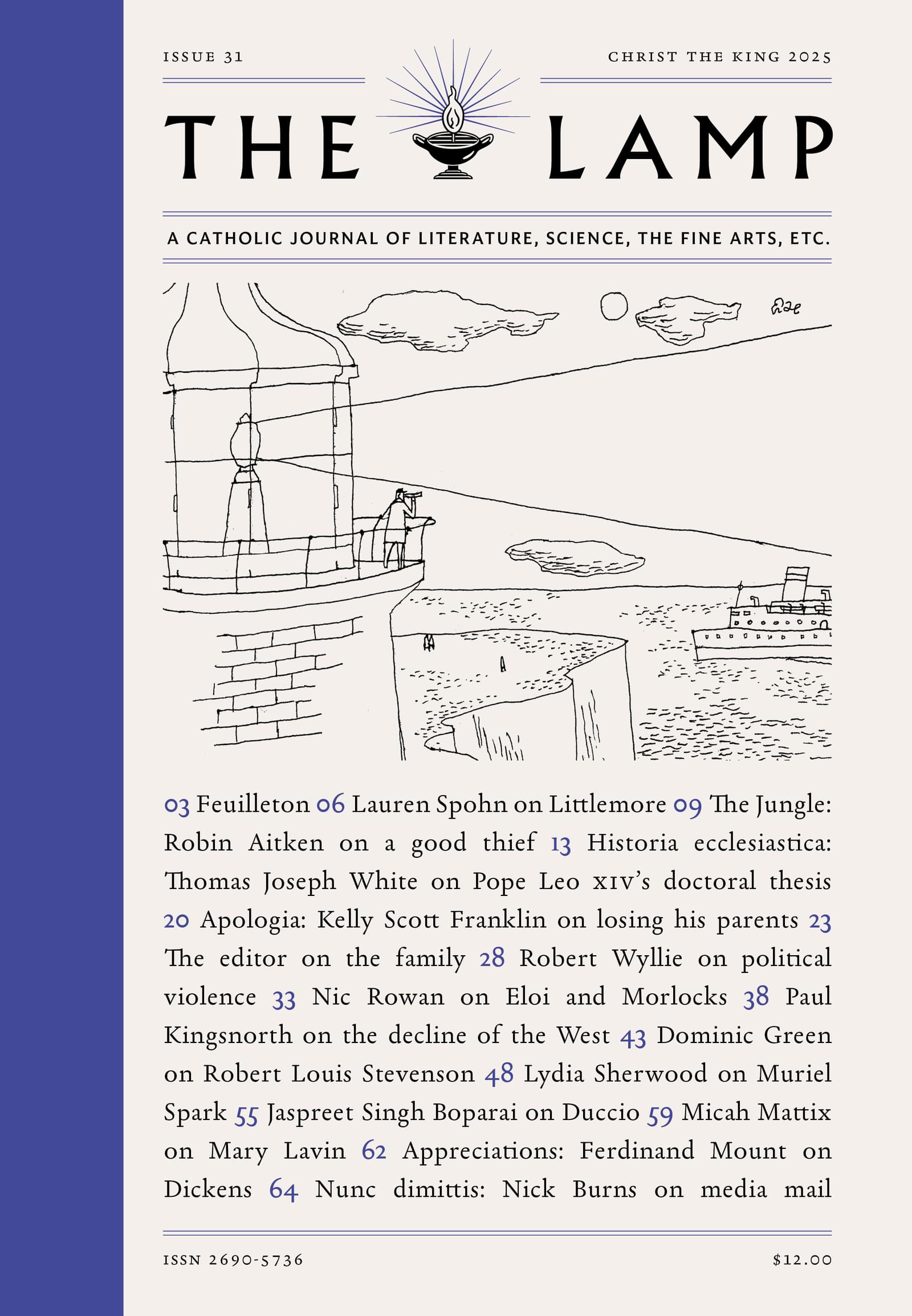Carey Wallace is the author most recently of The Discipline of Inspiration: The Mysterious Encounter with God at the Heart of Creativity (Wm. B. Eerdmans Publishing Co., 2025, reprinted by permission).
Not Everything Is Art
Not all cultural products are art. Any form art takes—song, image, movement, word—can also be used in the service of propaganda, pornography, or entertainment—or various blends of them all. Propaganda is created to make a point. We recognize it easily in fascist ceremonies and moralizing children’s books. But propaganda doesn’t just shore up philosophies and governments. It marks any work created to promote any point of view. A novel written to infect readers with the author’s personal despair is only an inversion of a dictator’s claims of false paradise. Both are forms of propaganda, just with different aims.
An enormous amount of propaganda in art is simply propaganda for the artist: blazing guitar solos that do nothing for a song other than show off the player’s chops, dazzling verbal flourishes that showcase an author’s skill but distract from the story. Artists also create propaganda to build their own personal mythology: to replace the reality of their lives with a fiction of their own, in their own mind or the minds of others.
Some propaganda may even be inadvertent. The artist may sincerely believe, or want to believe, the point he or she makes—the coward who writes tales of heroism, the philanderer who sings promises of eternal love, the alcoholic who paints pictures of a perfect world, free from disorder or pain. These artists may be the first victims of their own propaganda. Their need to believe may help them to create especially potent lies. Recording those lies may reveal fundamental truths about human nature and desire. And the artist’s sincerity may have a ring of authenticity that gives the propaganda added power.
But sincerity is not truth. And artists who are unable or unwilling to confront the deepest realities, either about ourselves or the world, will not produce art but propaganda, no matter how deeply felt. Propaganda appears not just in campaign posters and parades but everywhere from Hollywood movies to literary novels, in rap and country songs, in art flicks and fashion spreads. It may be ingenious, even beautiful. But no matter how well executed, and regardless of the cause it champions, its primary purpose is not to reveal but to convince.
Pornography makes promises it can’t keep, not just about the body but about food, comfort, freedom, violence, beauty, money, power. It pretends to expose a world that in fact does not exist: tailored to our desires and under our control. By definition, pornography is never the thing itself. As long as we hold it in our hands, we can never actually grasp whatever it promises. And pornography isn’t found only in the dark swamps of the Internet or on the racks at the back of drugstores. Almost all mainstream culture is full of it. It doesn’t show up just in the mild, obvious titillation of revealing costumes and cheap sex. It’s far more insidious in all the depictions of a world in which everything is brighter and more expensive than our own; everyone is smarter, funnier, better-looking, and easier to categorize; and events happen faster, make more sense, and settle more quickly into comforting resolutions.
This is not to say that anything beyond a strict adherence to reality constitutes pornography. All art chooses, focuses, and alters elements of life. And some artists meticulously craft impossible worlds that reveal, critique, or celebrate the best of our own. But the perfectly lit, sanitary industry standards of commercial imagery and storytelling produce a counterfeit of life that’s close enough to the real thing that we can take refuge in it from the genuine wisdom real life might otherwise teach us. This creates a pornography of life itself that is in many ways more dangerous than its brown-paper-wrapped cousin, which is at least honest in its aims.
Entertainment is a narcotic. It takes the form of circus clowns, acrobats, nonsense rhymes, magic tricks, telenovela plots, infectious beats. Entertainment distracts us from reality, lifts worry, breaks our awareness of the relentless flow of time, and offers unearned joy, laughter, pleasure, shock, and wonder. Just like any other drug, it can be a gift or a thief. It can release us from pain, sometimes for long enough that we begin to heal. It can relieve our worries or shrink them to manageable size so that we are able to think. It can remind us of the taste of hope, or simply how to laugh. But taken too long, or in excessive doses, it can blunt our minds, divorce us from real life, and permanently twist our vision.
By far the largest category of cultural production is failure: It doesn’t work as anything, not even propaganda or pornography. But all failure is not waste. In experiment and practice, the goal is to grow, not just succeed. And every new work, since it has never been made before, carries the threat of failure—otherwise it would be imitation, not art. If we never fail, it may be a sign that we never take the real risks art requires. Failure can also serve as a lesson in craft. When work fails, as craftspeople we can inspect the machine, climb around on the hidden beams, fill our kits with new tools. We can learn the power of imperfection—missed notes that suddenly transform an entire piece, stray lines that point the way to a whole new story. And when we learn to recognize the telltale signs of failure—in our own work or the work of others—we can change tack more quickly when it appears, cut it out, or avoid it altogether.
Almost none of these categories—pornography, propaganda, and entertainment—ever appear unalloyed. Beautiful melodies are paired with empty, false, or even vicious lyrics. An actor’s charisma shines through a weak script. Obscene lies are told in scenes of great beauty, and great truths are encrusted with profanity. Even work produced with a single definite aim may unintentionally drift between categories. Propaganda may accidentally tell the truth. Pornography may unintentionally celebrate the object it set out to exploit. Military parades sometimes achieve moments of striking beauty. Jokes sometimes deliver profound insight.
These categories of art, entertainment, pornography, and propaganda do not map reliably into categories of “high” and “low” art. Some rarefied theater productions contain nothing but banal prattle, while some pop songs offer indelible observations on the human condition. Television advertisements sometimes create wildly original visual experiences while vaunted fine artists fill ostensibly important galleries with cynically derivative work. And these categories are not just tangled or alloyed in every piece of work, but in the heart and mind of every artist. No artist, however great, produces only art. And any artist with the talent to create art likely has the facility to produce any other product in their genre. William Faulkner and F. Scott Fitzgerald wrote Hollywood thrillers. Andy Warhol drew advertisements. That same facility can also allow an artist to mimic whatever style is currently in vogue in their contemporary art world. Savvy mimicry of contemporary styles can pass successfully for art, even for an entire career. And some artists don’t copy the work of others, but the genuine inspiration that appeared in their own work in earlier years. We can see this constant flux between categories with frustration over the fact that there is so little pure art in the world. Or we can see it with the hope that art continues to emerge in the midst of failure and chaos.
The question of what is and is not art is complicated by the fact that art does not operate independently of an audience. Art is only ever completed in the mind of another human being. In many ways, all people are disturbingly similar. But we are also, in ways that are just as significant, wildly different. Where one person sees pornography, another may see beauty. Where one finds despair, another may find truth. Music that one person hears as incitement to violence may serve another person as a safe release for rage. What seems like sentimental drivel to one may provide genuine comfort to another. No piece of art, no matter how great, will move every audience. Even pieces very few people would define as art may have incredible meaning to someone—not just personal significance but the significance of true art: to illuminate, transfigure, challenge, and heal.
Despite all the time we spend and ink we spill arguing about what is and isn’t art, the person who sees more art in the world, rather than less, is the luckier one. Art itself both encompasses and inverts all the categories that compete with or masquerade as art. Like propaganda, art has the power to change minds, but by revelation, not persuasion. Like entertainment, art distracts us from this world, not by temporary illusion but with a greater truth. Pornography creates hunger without offering food. Art satisfies our hunger despite the fact that we haven’t eaten. Pornography strips its objects of their true identity. Art invests its elements with resonance and weight far beyond their ordinary use.
As artists, we may never know with absolute certainty whether or not we have created art. Contemporary critics often look like fools in the light of history, and history itself is fickle. Aesthetic theories contradict each other and shift like tides. The line where art begins and ends can be unclear even in the artist’s own mind. We’re never sure exactly when we’ve crossed into that territory, at what point we crossed back, or how we can get there again. Our confusion is often compounded by self-doubt that prevents us from recognizing our own triumphs. Or self-deception that keeps us from admitting our own failures. Or both. Despite all this, in our best or most defenseless moments, we do know, deep in our hearts, both when we have created art and when we have not. We know it beyond rational thought, in the space where art itself operates. And the key to recognizing art is the same as the key to creating it: the courage to act on what we know, despite the fact that we may never be able to prove it.
This essay is excerpted from The Discipline of Inspiration: The Mysterious Encounter with God at the Heart of Creativity(Wm. B. Eerdmans Publishing Co., 2025, reprinted by permission).




